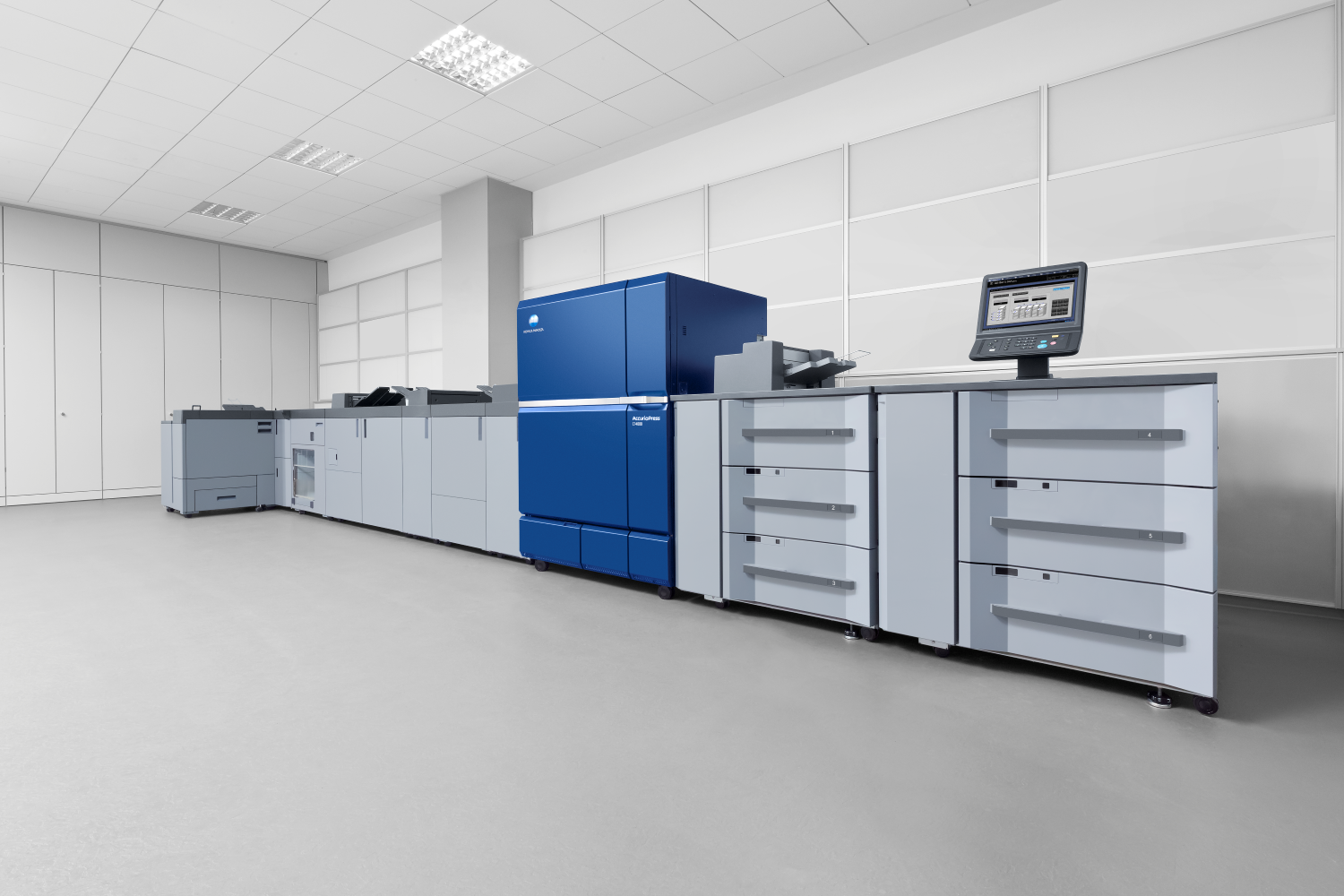The trend towards online and cloud computing affects all businesses. In order to remain competitive, small and medium printers also need web-2-print solutions to sell their products and services. This is because more and more customers expect web-based offerings such as remote publishing, online printing, and e-business printing. What are the potentials of web-to-print and what makes a modern web-to-printshop?
Why is web-to-print so important for you as a print service provider? It enables you to differentiate your services from those of your competitors, reduce your costs, increase efficiency and much more.
What are the advantages of web-to-print in business printing?
Web-to-print shops have many potentials for printers and their customers. They offer:
- An online storefront for all print shop products and services to increase sales.
- 24/7 customer access for orders
- Transparency of the ordering process to reduce customer service queries
- Integrated online payment options that improve cash flow
- Automation of ordering, payment and accounting processes
- Time and cost savings for client marketing departments
Benefits for in-house print departments (CRDs)
By the way: just like external printers, in-house printers also benefit from web-to-print. They too can reduce costs, increase productivity and profits, streamline ordering processes, reduce the number of time-consuming requests, simplify re-ordering of print jobs and improve customer relations.
Modern web-to-print is much more than the mere internet-based, automated transmission or production of printed matter.
In the context of industry and Print 4.0, shop systems must be flexible and adaptable and they should be able to be integrated seamlessly into IT system landscapes.
What interfaces does a future-proof print shop need?
Web-to-print-Shop-Systems are subject to permanent change. They must be adaptable to existing processes in a print shop and to processes at the print shop’s customers, and they must be able to be integrated into IT system landscapes. This means that future-proof web-to-print shops need-shops need interfaces to enable data to be exchanged with other systems automatically and thus cost-effectively. Useful interfaces are:
1. Interface to the pre-press stage (Prepress): This enables print data transmitted in the shop to be transferred directly to the prepress workflow for data checking, ideally including article information such as format, paper type, finishing, print run and delivery date. Ideally, this interface should be bidirectional. The web-to-print-system can then trigger appropriate follow-up processes, e.g., sending a mail confirmation to the customer.
2. Interface to customers’ eProcurement systems such as SAP, Navision, and Oracle. The bidirectional exchange of job information simplifies the ordering and invoicing process and enables common standards for all means of communication.
3. Interface to shipping and logistics service providers for automatic, web-based communication, for example of all relevant order and shipping information.
4. Interface to payment systems: Forms of payment are a key success factor. Typical payment systems that require interfaces are Paypal or Klarna . Without an external payment system you can offer cash on delivery, direct debit and invoice from the web-to-print shop. The decisive factor is which forms of payment your customers prefer.
5. Interface to factoring systems: With the option of “purchase on account”, sales can be significantly increased. can be increased significantly. The implementation of a factoring system to hedge the risk of non-payment-system to hedge the risk of non-payment.
6. Import interface for editing printed matter: An important function for web-to-print-shops with online design of printed matter is the use of design templates. This involves adapting graphic designs so that they can be edited with the web-to-print-system.
7. Image databases and image personalisation: This interface imports external images and makes them available to the user. In the B2B environment, for example, interfaces are used that address PIM (Product Information Manager) and DAM (Digital Asset Manager) systems.
8. Marketplace: Depending on the business model, it may be desirable to link the web-to-print system to a marketplace. -system to a marketplace. There are interfaces for this, for example to Amazon and Google.
9. CO2 calculator: For the climate-neutral production of print products it makes sense under sustainability goals to compensate for the resources consumed. For this purpose, the Web-to-Print-system can offer an interface directly to a partner for climate-neutral printing who calculates the CO2 emissions of the order and handles the compensation via certified climate protection projects. certified climate protection projects.
10. Interface to MIS/ERP: It enables the transfer of job and invoice data to an MIS/ERP system and provides APIs to import back the process status.
What types of web-to-print shops are there?
Depending on the target group, it makes sense to limit the web shop. Accordingly, a distinction is made between closed shops (closed web portals) and open shops.
Closed Shops
Target groups for Closed Shops are industrial companies, businesses, organisations or public institutions. Closed shops are closed web portals to which only defined user groups, for example regular customers, have access. Often, areas can be created for different customers; with individual CD-compliant user interfaces and specifically stored prices.
Open Shops
An open web portal, an Open Shop, enables the sale of printed matter and other products for an open user group in the B2B and B2C sector. This makes it possible to win new customers.
The potential of web-to-print is enormous. Print service providers can expand their range of print products, offer creative online solutions, provide services such as remote publishing around the clock and streamline order processing. And in-house print departments also benefit from the automation of web-to-print.
Find out how to get the most out of your press with Accurio Press hardware and AccurioPro Flux Ultimate software to get the most out of your web-to-printshop.





